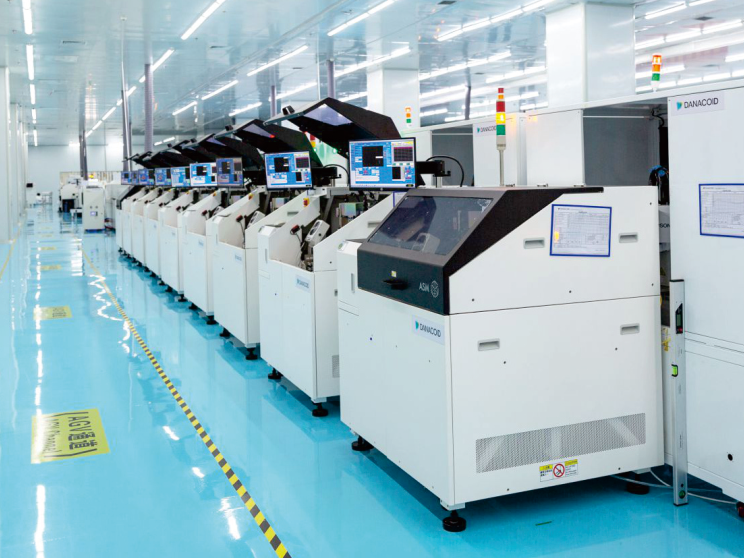Introduction to Speech Systems and Home Automation
Speech systems, integral to home automation, enable users to control household devices through voice commands. These systems eliminate the need for physical interaction with devices, offering a hands-free approach to managing everyday home activities. With an array of compatible gadgets available on the market, speech systems have become an essential component of smart homes.
Smart homes are becoming increasingly prevalent, acting as a nexus between technology and user convenience. Within this ecosystem, speech systems serve as the bridge that connects homeowners to their devices, transforming complex interfaces into simple voice-driven commands. This evolution significantly enhances user experience by making interactions with technology seamless and intuitive.
The integration of artificial intelligence and machine learning in speech systems allows these technologies to learn user preferences and adapt accordingly. This adaptability is crucial for tailoring responses to individual lifestyles, thus optimizing the efficiency of home automation. Speech systems can, for instance, adjust lighting and heating based on user habits, leading to a more personalized and efficient home environment.
The benefits of implementing speech control within home automation are manifold. It offers unparalleled convenience, as commands can be issued without moving from a location. Additionally, it boosts accessibility for individuals with physical limitations and contributes to energy efficiency by enabling precise control of household devices. By integrating speech systems, users can enjoy a smarter, more efficient living experience.
Popular Voice Assistants and Platforms
Amazon Alexa
Amazon Alexa is a leading voice assistant known for its extensive features that include voice recognition, skill integration, and compatibility with a wide array of smart home devices. Alexa's integration with the Amazon ecosystem enables seamless control over lighting, temperature, and security systems through voice commands. The platform's versatility is highlighted by its capability to connect with over 140,000 smart home devices and access more than 100,000 Alexa skills, making it an indispensable tool for home automation enthusiasts.
Google Assistant
Google Assistant stands out by leveraging Google's powerful search capabilities to efficiently provide information and control smart devices. Its integration into the Google ecosystem allows seamless operation across various devices, from smartphones to smart displays. According to recent data, Google Assistant is one of the most popular voice assistants, with a user adoption rate of approximately 46%, showcasing its competitive edge in the smart home market.
Apple Siri
Apple Siri offers unique features in home automation, particularly through its integration with Apple HomeKit, emphasizing user privacy. The assistant's ability to connect seamlessly within the Apple ecosystem, including iPhones, iPads, and the HomePod, provides a cohesive user experience. Apple's focus on device interconnectivity encourages streamlined interactions, making Siri a preferred choice for users invested in Apple's smart technology.
Compatibility with Smart Home Devices
Compatibility is crucial in determining user experience with speech systems. Selecting the right voice assistant for specific smart devices ensures optimal performance and integration. Many popular smart home devices, such as Philips Hue lights and Nest thermostats, support compatibility with multiple platforms like Amazon Alexa, Google Assistant, and Apple Siri. This cross-platform compatibility fosters a more versatile and integrated smart home environment, enhancing user satisfaction.
Methods for Integrating Speech Systems
Connecting Speech Systems to Smart Hubs
Integrating speech systems with smart hubs simplifies home automation by centralizing control. To connect, start by choosing a compatible smart hub like Samsung SmartThings or an Amazon Echo device. From there, ensure your speech system is updated to the latest firmware version for optimal performance. Connect the smart hub to your home network, typically via Wi-Fi or Ethernet, then proceed to link your speech system with the hub through the appropriate mobile apps or interfaces. This setup allows seamless voice-activated control over a range of smart devices connected within the home.
Specific smart hubs such as Samsung SmartThings and Amazon Echo play pivotal roles in enhancing speech integration. Samsung SmartThings supports a wide array of third-party devices, making it an excellent choice for users with diverse home tech setups. Similarly, Amazon Echo, powered by Alexa, facilitates intuitive voice commands to control connected devices, reinforcing the hub's role as a central node in speech-driven home automation.
Using APIs and IoT Protocols (e.g., Zigbee, Z-Wave)
Application Programming Interfaces (APIs) are essential for creating seamless integrations between speech systems and smart devices. APIs allow developers to build applications that can communicate effectively with other devices, ensuring a unified and coherent user experience. They serve as the backbone for facilitating interactions between speech systems and the broader home automation network, thus increasing the utility and flexibility of these systems.
IoT protocols like Zigbee and Z-Wave significantly enhance the communication between devices in a smart environment. These protocols are designed to facilitate robust, low-power communication between devices, which is crucial for speech systems to operate effectively across the smart home. By enabling the creation of a mesh network, they extend the range and reliability of connections, allowing devices to work harmoniously, even as the network expands. As a result, users can enjoy a more efficient and interconnected home automation experience.
Common Use Cases for Speech Systems in Home Automation
Voice-controlled lighting, thermostats, and security systems
Voice-controlled systems have revolutionized home automation by offering unparalleled convenience and efficiency. They allow users to manage lighting, thermostats, and security through simple voice commands, enhancing daily routines and effectively managing energy consumption. For instance, adjusting thermostats via voice commands can lead to energy savings, with studies indicating reductions in energy usage by up to 10%, as reported by the U.S. Energy Information Administration. User satisfaction with these systems is notably high; a survey found that more than 80% of users appreciated the hands-free interactions that voice-controlled systems provide, especially for managing security settings and adjusting lights according to natural daylight cycles.
Hands-free entertainment and appliance control
Speech systems significantly enhance the entertainment experience, enabling users to operate sound systems, TVs, and streaming services without lifting a finger. By dictating commands like "play" or "pause," users enjoy a seamless, hands-free entertainment environment. Moreover, advances in appliance control mean that smart kitchens can now be managed via voice, offering commands such as preheating ovens or starting coffee machines. These innovations not only enhance convenience but also foster a more interactive living space, reflecting the continuous integration of speech systems in everyday scenarios. Such advancements illustrate the growing role of speech technology in simplifying and enriching daily life.
Challenges and Solutions in Integration
Privacy and Security Concerns
When integrating speech systems into home automation, privacy concerns are a significant challenge. These systems, while offering convenience, can create potential risks such as unauthorized access and data hacking. Experts emphasize these risks, projecting that smart home systems could be vulnerable to security breaches if not properly secured. According to a study by KPMG in 2021, 68% of consumers worry about their personal data being stolen through smart devices. It's crucial for users to be aware of these concerns and take steps to mitigate them, such as utilizing strong passwords and regularly updating the software for all smart devices.
Ensuring Seamless Connectivity and Responsiveness
Maintaining seamless connectivity and system responsiveness is vital for a smooth user experience with speech systems in home automation. Often, users face connectivity issues stemming from network reliability and device compatibility. To combat these, several solutions can be adopted. First, choosing robust Wi-Fi systems and ensuring coverage throughout your home can significantly reduce these issues. Additionally, keeping devices updated with the latest firmware can enhance system responsiveness. Regular updates not only keep the systems functioning efficiently but also provide the latest security patches to protect against vulnerabilities. These steps are essential to creating a reliable and user-friendly smart home environment, enhancing the overall integration experience.
Conclusion
The integration of speech systems into home automation has undeniably increased convenience and efficiency. By allowing voice-activated control, these systems simplify managing various smart devices, making daily routines seamless and hassle-free. As highlighted, the advantages include improved accessibility and the ability to control multiple home devices with simple commands, underscoring their immense potential in enhancing smart living environments.
Looking ahead, future trends in speech systems may include even more intuitive human-computer interactions and advanced privacy features. As technology evolves, we can expect speech systems to become more integrated with artificial intelligence, enhancing their ability to learn user preferences and anticipate needs. This evolution will likely mark a significant leap in smart home capabilities, making them not only more user-friendly but also more secure and adaptive to individual lifestyles.
FAQ Section
What are speech systems in home automation?
Speech systems are technologies that allow users to control home devices through voice commands, enabling hands-free management of appliances like lighting and thermostats.
Which platforms are compatible with speech systems?
Popular platforms like Amazon Alexa, Google Assistant, and Apple Siri are compatible with a wide range of smart home devices, ensuring seamless integration and control.
How do speech systems enhance home automation efficiency?
By learning user preferences and adapting responses, speech systems optimize device management, leading to energy efficiency and personalized home environments.
What are the common challenges with integrating speech systems?
Challenges include privacy concerns, potential security risks, and ensuring seamless connectivity. Solutions involve strong security measures and keeping devices updated.









